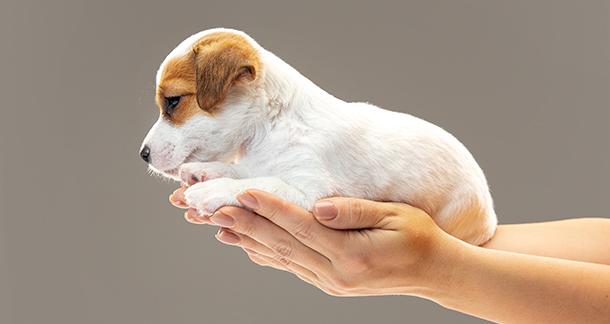In a world brimming with stories of companionship and love, few narratives resonate as profoundly as those forged between humans and their pets. The decision to adopt a pet can be one of the most rewarding choices a person makes, ushering in a new chapter filled with joy, loyalty, and often a few unexpected challenges. However, the journey towards pet ownership is not one to be taken lightly; it requires thoughtful consideration and preparation. As we delve into the essentials of pet adoption, we must explore the key factors that influence this significant commitment. From understanding the responsibilities involved to the importance of choosing the right fit for both pet and owner, this article aims to illuminate the path for prospective adopters, ensuring a harmonious beginning to their new life together.
Table of Contents
- Understanding the Commitment and Responsibilities of Pet Ownership
- Identifying the Right Pet for Your Lifestyle and Environment
- Navigating the Adoption Process and Finding Reputable Shelters
- Preparing Your Home for a New Pet: Essential Tips and Supplies
- Insights and Conclusions
Understanding the Commitment and Responsibilities of Pet Ownership

Adopting a pet is a rewarding yet profound experience that requires a genuine commitment to their well-being. This relationship means more than just providing food and shelter; it involves lifelong responsibilities that vary based on the type of pet. Each animal has its unique needs, and understanding these is crucial. Consider the following responsibilities:
- Daily Care: Regular feeding, grooming, and exercise are essential for maintaining their health.
- Healthcare: Routine veterinary visits, vaccinations, and preventative care must be prioritized to avoid health issues.
- Training and Socialization: Investing time in training ensures good behavior and fosters a trusting bond.
- Emotional Support: Pets thrive on companionship; providing love and attention is vital for their emotional well-being.
Moreover, potential pet owners should assess their lifestyle to ensure compatibility with the pet’s needs. Different animals come with varied energy levels and social requirements, so it’s essential to reflect on how much time you can dedicate daily. Here’s a simple comparison to illustrate some common pets and their general needs:
| Pet Type | Daily Exercise Needs | Social Interaction Needs | Grooming Level |
|---|---|---|---|
| Dog | High | High | Moderate to High |
| Cat | Low to Moderate | Moderate | Low to Moderate |
| Fish | None | None | Low |
| Rabbit | Moderate | Moderate | Low to Moderate |
Taking the time to understand and prepare for these obligations ensures not just the happiness of your new companion but also enhances your experience as a pet owner.
Identifying the Right Pet for Your Lifestyle and Environment

Choosing a pet is not just about picking an adorable face; it’s a reflection of your lifestyle and the environment in which you live. First, you need to evaluate your daily routine and the level of activity you’re able to commit to. For example, if you lead a busy life, opting for a low-maintenance pet, such as fish or hamsters, might be more appropriate. On the other hand, if you’re an active person who enjoys outdoor activities, a dog—particularly a high-energy breed—could be the perfect companion. Additionally, consider your living situation; pets like cats or small breeds of dogs tend to adapt well to apartment life, whereas larger breeds typically require more space to thrive.
Another crucial aspect is understanding the time and attention a pet will demand. Factors to consider include:
- Daily Exercise Needs: What level of physical activity can you provide?
- Social Interaction: Are you home often enough to engage with your pet?
- Grooming Requirements: How much time can you devote to grooming tasks?
| Pet Type | Activity Level | Space Requirements |
|---|---|---|
| Dog | High | Medium to Large |
| Cat | Medium | Small to Medium |
| Fish | Low | Small |
| Hamster | Low | Small |
By carefully assessing these factors, you’ll be more equipped to find a pet that harmonizes with your life and environment, ultimately creating a fulfilling companionship for both you and your future furry (or scaly) friend.
Navigating the Adoption Process and Finding Reputable Shelters
Embarking on the journey of pet adoption requires careful navigation of the process, which can often be overwhelming. The first step is to identify reputable shelters in your area. Look for organizations that prioritize animal welfare and have a transparent adoption process. Some key factors to consider when assessing a shelter include:
- Accreditations: Verify if the shelter is certified by recognized animal welfare associations.
- Reviews and Testimonials: Research online reviews and talk to previous adopters to gauge their experiences.
- Facility Condition: Visit the shelter to inspect the living conditions of the animals.
Once you have narrowed down your options, prepare for the various stages of the adoption process. Each shelter may have different requirements, but typically you can expect the following steps:
| Step | Description |
|---|---|
| Application | Fill out an application form detailing your living situation and preferences. |
| Interview | Participate in an interview or consultation to discuss your ability to care for a pet. |
| Meet and Greet | Arrange a visit to interact with potential pets to find the right match. |
| Home Check | Some shelters may conduct a home visit to ensure a safe environment. |
Preparing Your Home for a New Pet: Essential Tips and Supplies
Welcoming a new pet into your home is an exciting experience, but before you get started, it’s crucial to create a safe and comfortable environment for your furry friend. Start by pet-proofing your space. This includes securing loose wires, removing hazardous plants, and ensuring that all cleaning supplies are stored out of reach. Additionally, consider establishing designated areas for eating, sleeping, and playing. This not only helps your pet feel more settled but also aids in their training. To keep your pet entertained, gather some interactive toys, such as chew toys or puzzle feeders, to stimulate their mind and body.
As you prepare your home, it’s essential to stock up on the necessary supplies. Here’s a quick checklist to help you get started:
- Food and water bowls: Choose sturdy and easy-to-clean options.
- Pet food: Consult your veterinarian for recommendations based on your pet’s age and breed.
- Collar and leash: Ensure they fit comfortably and securely.
- Bedding: Provide a cozy space for your pet to rest.
- Litter box and litter (for cats): Place it in a quiet, accessible location.
| Essential Supplies | Purpose |
|---|---|
| Grooming tools | Keep your pet’s coat healthy and free of tangles. |
| First-aid kit | Address minor injuries and emergencies. |
| Identification tags | Help your pet find their way home if lost. |
Insights and Conclusions
As we conclude our exploration of the essentials of pet adoption, it becomes clear that this journey is not just about finding a new furry companion but also understanding the profound responsibilities that accompany the decision. Each consideration we’ve discussed—from assessing personal readiness and understanding the commitment involved, to evaluating lifestyles and the unique needs of different animals—serves as a guide for potential adopters. Remember, adopting a pet is not merely an act of kindness; it is an invitation to cultivate a relationship that could last for years.
As you step into the world of pet adoption, carry with you the knowledge that this bond can be immensely rewarding but requires thoughtful preparation. Reflect on the considerations we’ve highlighted, engage with local shelters or rescue organizations, and listen to your heart. By approaching adoption with care and awareness, you not only pave the way for a harmonious integration of a pet into your life but also provide a loving home to an animal in need. May your journey lead you to the perfect companion, one who will fill your days with joy, laughter, and unconditional love.



